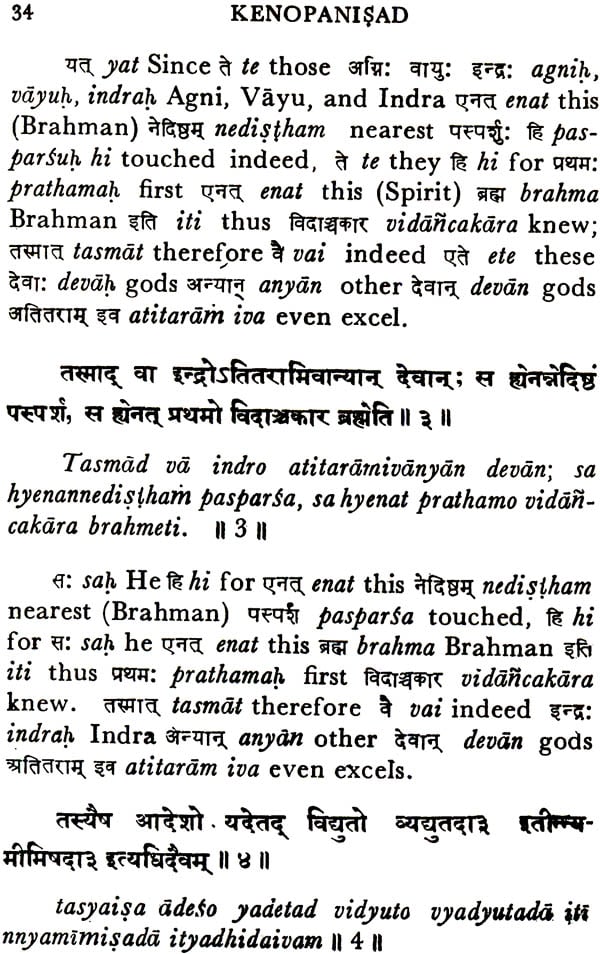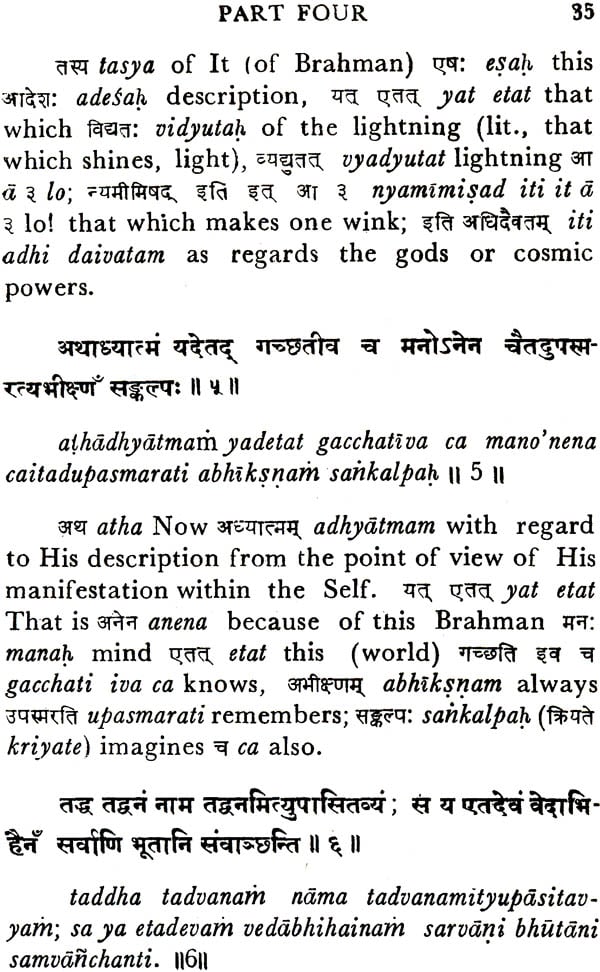
Kena Upanisad (Sanskri Text, Transliteration, Word-to-Word Meaning, English Translation and Detailed Notes) - A Most Useful Edition for Self Study
Book Specification
| Item Code: | NAE790 |
| Author: | Swami Sarvananda |
| Publisher: | Sri Ramakrishna Math |
| Language: | Sanskrit Text, Transliteration, Word to Word Meaning, English Translation and Notes |
| Edition: | 2015 |
| ISBN: | 9788171200092 |
| Pages: | 51 |
| Cover: | Paperback |
| Other Details | 7.0 inch X 5.0 inch |
| Weight | 40 gm |
Book Description
Who impels the mind to alight on its object enjoined by whom does the vital force proceed of function at whose behest do men utter speech what intelligence indeed, directs the eyes and the ears.
Like the Isavasyopanisad the Kenopanisad too derives its name from the first word of its opening verse, namely, kena’. It is also called Talavakropanisad. As it forms, according to Sankara and other commentator, the ninth chapter of Talavakãra or Jaimini Brahmana; but according to Dr. Burnell’s MS. of the Brähmana it forms the tenth section of the fourth chapter.
The most interesting feature of this Upanisad lies in the fact that it gives a subtle psychological analysis which is so suggestive that anyone who follows it closely is sure to find himself at last led to the very gate of the Trans cendent. Though short, its value is great; and sankara, it is believed, has written two Commentaries, namely, padabhãsya and väkyabhasya.
The Upanisad is divided into four Parts. The first two Parts are in the form of dialogue, and explain how’ one can arrive at the Atman through the analysis of perception. They suggest that the Atman or the Absolute Consciousness can be intuited by detaching it from the functions of the mind and the senses. It can be done only by the intuitive faculty of the Atman itself, for the senses arc utterly incapable of perceiving it. In the third Part, the principles of the two earlier Parts are described in an allegorical form. Here the devas stand for the senses. In the fourth Part, the Upanisad speaks of the subjective and objective ways of meditating on Brahman and of the results of such meditations.







